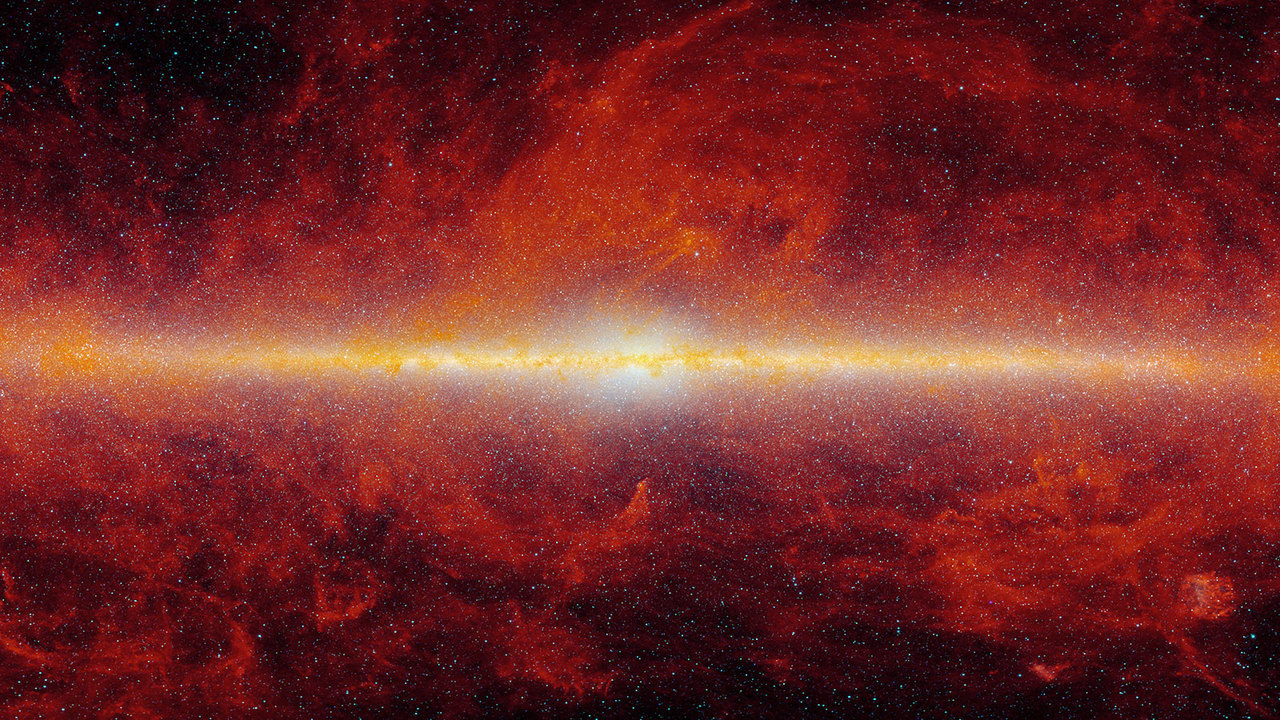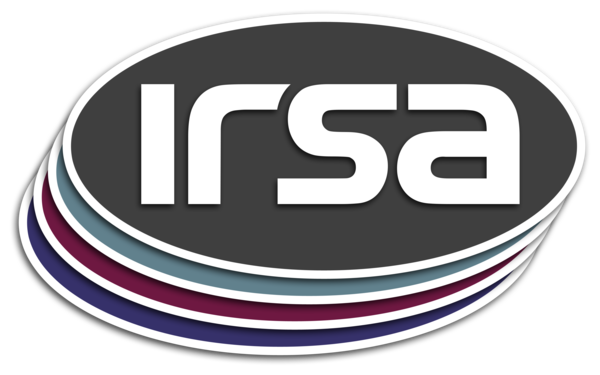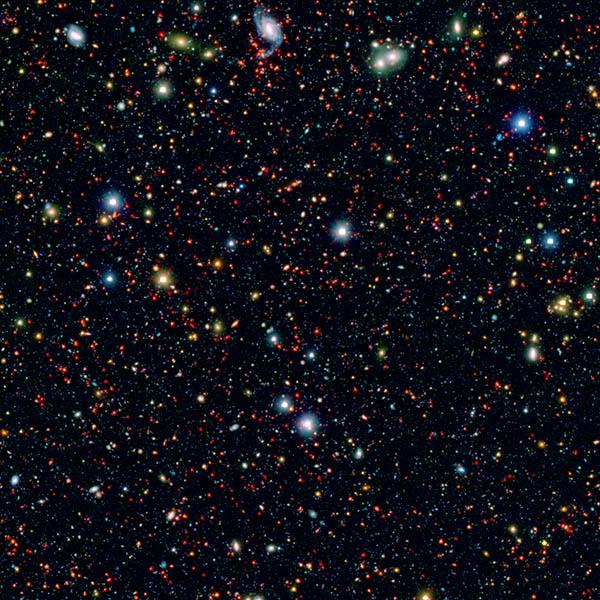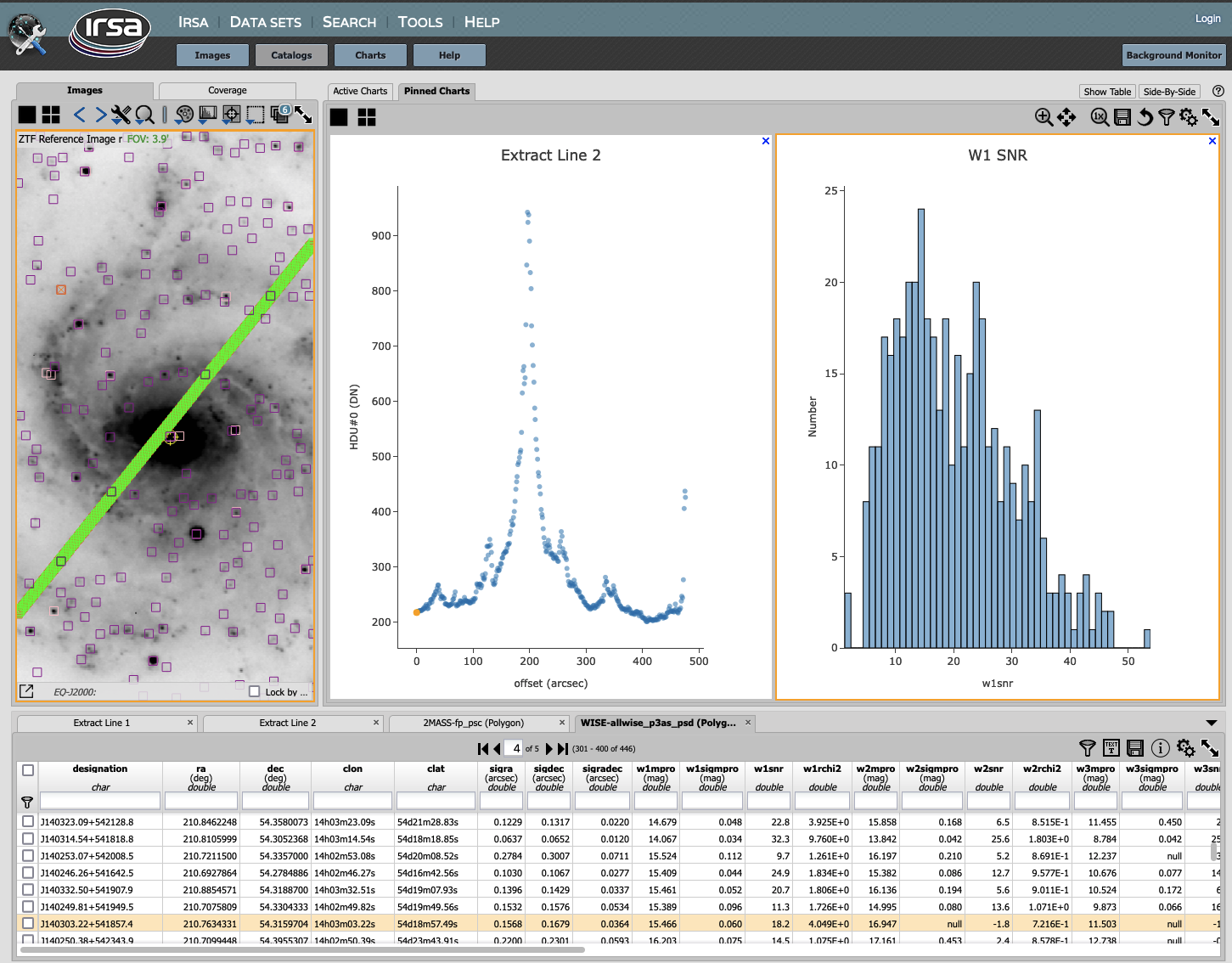Overview: IRSA is chartered to curate the science products of NASA's infrared and submillimeter missions. In total, IRSA provides access to more than 700 billion astronomical measurements, including all-sky coverage in 20 bands.
IPAC supports NASA's Astrophysics Archives by operating the NASA/IPAC Infrared Science Archive (IRSA). IRSA is the primary archive for NASA's infrared and submillimeter missions, including Spitzer, (NEO)WISE, 2MASS, IRTF, SOFIA, and IRAS, as well as upcoming missions like SPHEREx and NEOSurveyor. IRSA also serves data from ESA missions with NASA participation, such as Euclid, Planck, and Herschel. In total, IRSA hosts over 8 petabytes of data from over 18 projects. By operating IRSA, IPAC enables research across the full range of NASA's Astrophysics science goals. IRSA's objectives are to ingest data from active infrared missions supported by NASA, to maintain vital archives of irreplaceable infrared data, and to enable cutting-edge research involving archival data. Approximately 15% of refereed journal articles in astrophysics annually make use of the infrared data curated at IRSA. Increasingly, IRSA is enabling planetary science with infrared data sets and tools.
IRSA staff work closely with IPAC experts from infrared missions such as Spitzer, Herschel, Planck, (NEO)WISE, Euclid, and SPHEREx. This expertise guides the development of visualization software, leads to clarity of documentation, and can be tapped to support IRSA's user questions. IRSA is a leader in the management of large astrophysics data sets. IRSA also benefits from archive technologies that are built for non-NASA or non-infrared projects that IPAC is involved with, such as ZTF and the Vera C. Rubin Observatory. Finally, IRSA shares resources (data center, computer support) with other projects within IPAC, reducing the cost of operations.










